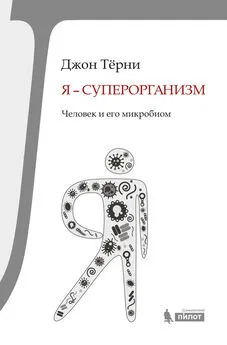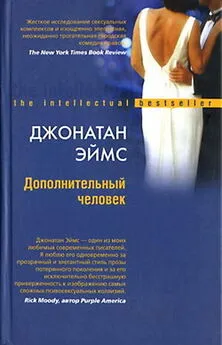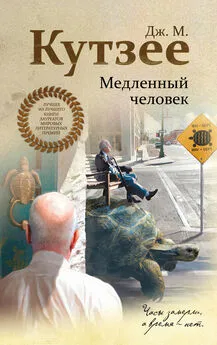Джон Тёрни - Я – суперорганизм! Человек и его микробиом
- Название:Я – суперорганизм! Человек и его микробиом
- Автор:
- Жанр:
- Издательство:ЛитагентБИНОМ. Лаборатория знанийa493f192-47a0-11e3-b656-0025905a06ea
- Год:2016
- Город:Москва
- ISBN:978-5-00101-416-4
- Рейтинг:
- Избранное:Добавить в избранное
-
Отзывы:
-
Ваша оценка:
Джон Тёрни - Я – суперорганизм! Человек и его микробиом краткое содержание
В каждом из нас живет множество бактерий и вирусов-во рту, на коже, в кишечнике. Они помогают переваривать пищу и усваивать лекарства, влияют на нашу гормональную и иммунную системы и более того – даже на мозг! Все это сообщество микроорганизмов ученые назвали микробиомом.
Джон Тёрни рассказывает о самых последних исследованиях микробиома, о его возникновении, росте и роли в развитии самых разных болезней (аллергии, диабета, желудочно-кишечных расстройств, рака и шизофрении). Прочтя эту книгу, вы, несомненно, по-новому ощутите свой организм, свое тело; по-новому посмотрите на себя как на личность.
В формате pdf A4 сохранен издательский дизайн.
Я – суперорганизм! Человек и его микробиом - читать онлайн бесплатно ознакомительный отрывок
Интервал:
Закладка:
Petrof, E., et al (2013). Microbial ecosystems therapeutics: a new paradigm in medicine? Beneficial Microbes 4: 53–65.
Petrof, E., et al (2013). Stool substitute transplant therapy for the eradication of C. difficile infection: RePOOPulating the gut. Microbiome 1:3.
Pollan, Michael (2006). The Omnivore’s Dilemma: A Natural History of Four Meals . Penguin.
Pradeu, Thomas (2012). The Limits of the Self: Immunology and Biological Identity . Oxford University Press.
Pradeu, Thomas, and Edwin Cooper (2012). The danger theory: 20 years later. Frontiers in Immunology , 3: 287.
Pray, Leslie, et al (2012). The Human Microbiome, Diet and Health: Workshop Summary . Institute of Medicine, US.
Price, Lance (2010). The Effects of Circumcision on the Penis Microbiome. PloS One , 5: e8422.
Pride, David, et al (2012). Evidence of a robust resident bacteriophage population revealed through analysis of the human salivary genome. ISME Journal , 6: 915–926.
Ravel, J., et al (2011). Vaginal microbiome of reproductive-age women. Proceedings of the National Academy of Sciences . 108 Suppl 1:4680–7.
Relman, David (2012). The human microbiome: ecosystem resilience and health. Nutrition Reviews , 70: S2 – S9.
Relman, David, et al (2009). Microbial Evolution and Co-Adaptation – A Tribute to the Life and Scientific Legacies of Joshua Lederberg . National Academy of Sciences, US.
Richmond, Ben (2014). Cola-flavoured Genitals, and Other Potential Uses for Microbiome Hacking. http://motherboard.vice.com September 11.
Ridaura, V., et al (2013). Gut microbiota from twins discordant for obesity modulate metabolism in mice. Science, 341: 1241214.
Roach, Mary (2013). Gulp: Adventures in the Alimentary Canal . Oneworld.
Rook, Graham (2012). A Darwinian view of the Hygiene or ‘Old Friends’ hypothesis. Microbe , 7: 173–180.
Rook, Graham (2013). Regulation of the immune system by biodiversity from the natural environment: An ecosystem service essential to health. Proceedings of the National Academy of Sciences , 110: 18360–18367.
Rosebury, Theodor (1969). Life on Man . Secker and Warburg.
Sachs, Jessica Snyder (2007). Good Germs, Bad Germs: Health and Survival in a Bacterial World . Hill and Wang.
Saey, Tina (2014). Here’s the poop on getting your gut microbiome analysed. www.sciencenews.org June 17.
Salter, Susannah, et al (2014). Reagent and laboratory contamination can critically impact sequence-based microbiome analysis. BMC Biology , 12: 87.
Sanford, James, and Richard Gallo (2013). Functions of the skin microbiota in health and disease. Seminars in Immunology , 25: 370–377.
Scheuring, Istvan, and Douglas Wu (2012). How to assemble a beneficial microbiome in three easy steps. Ecology Letters , 15: 1300–1307.
Schluter, Jonas, and Kevin Foster (2012). The evolution of mutualism in gut microbiota via epithelial selection. PLoS Biology , 10: e1001424.
Schnorr, Stephanie, et al (2014). Gut microbiome of the Hadza hunter-gatherers. Nature Communications , 5: 3654.
Scott, Julia (2014). My No-Soap, No-Shampoo, Bacteria-Rich Hygiene Experiment. New York Times Magazine , May 22.
Seekatz, Anna, et al (2014). Recovery of the Gut Microbiome following Fecal Microbiota Transplantation. mBio , 5: e00893.
Shaikh-Lesko, Rina (2014). Visualising the ocular microbiome. The Scientist , May 12.
Shanahan, Fergus, and Eamonn Quigley, (2014). Modification of the gut microbiome to maintain health or treat disease. Gastroenterology , 146: 1554–1563.
Simons, Jake (2014). Biodesign: Why the future of our cities is soft and hairy. http://edition.cnn.com/2014/08/27/tech/innovation/biodesign-why-the-future-of-our-cities-is-soft-and-hairy.
Singer, Emily (2013). Our bodies, our data. Quanta Magazine online. October. http://www.simonsfoundation.org/quanta/20131007-our-bodies-our-data.
Singh, Nagendra, et al (2014). Activation of Gpr109a, receptor for niacin and the commensal metabolite butyrate, suppresses colonic inflammation and carcinogenesis. Immunity , 40: 128–139.
Smith, Mark, et al (2014). How to regulate faecal transplants. Nature , 506: 290–91.
Smith, Peter (2014). Is your body mostly microbes? Actually, we have no idea. Boston Globe , September 14.
Smith, Peter (2014). A new kind of transplant bank. New York Times , Feb 17.
Sommer, Felix, and Fredrik Bäckhed (2013). The gut microbiota – masters of host development and physiology. Nature Reviews Microbiology , 11: 227–238.
Song, Se Jin, et al (2013). How delivery mode and feeding can shape the bacterial community in the infant gut. Canadian Medical Association Journal , 185: 373–374.
Song, Se Jin, et al (2013). Cohabiting family members share microbiota with one another and with their dogs. eLife , 2: e00458.
Sonnenberg, Justin, et al (2004). Getting a grip on things: how do communities of bacterial symbionts become established in our intestine? Nature Immunology , 5:569–573.
Staley, James and Allen Konopka (1985). Measurement of in situ activities of nonphotosynthetic microorganisms in aquatic and terrestrial habitats. Annual Review of Microbiology , 39: 321–46.
Sterling, Bruce (2002). Tomorrow Now: Envisioning the Next Fifty Years . Random House.
Sullivan, et al (2011). Clinical efficacy of a specifically targeted anti-microbial peptide mouth rinse: targeted elimination of Streptococcus mutans and prevention of demineralization. Caries Research . 45: 415–428.
Tang, W., et al (2013). Intestinal microbial metabolism of phosphatidylcholine and cardiovascular risk. New England Journal of Medicine , 368: 1575–1584.
Thaiss, Christoph, et al (2014). Exploring new horizons in microbiome research. Cell, Host and Microbe . 15: 662–667.
Tillisch, Kirsten, et al (2013). Consumption of fermented milk product with probiotic modulates brain activity. Gastroenterology , 144: 1394–1401.
Tito, Raul (2012). Insights from characterizing extinct human gut microbiomes. PloS One . 7: e51146.
Tomes, Nancy (1998). The Gospel of Germs: Men, Women and the Microbe in American Life . Harvard University Press.
Turney, J. (2003). Lovelock and Gaia: Signs of Life . Icon Books.
Upbin, Bruce (2013). Yogurt is probiotic, why not your steering wheel? Forbes.com, 3/01/2013.
Van Nood, Els, et al (2013). Duodenal infusion of donor feces for recurrent Clostridium difficile. New England Journal of Medicine , 368: 407–415.
Waller, John (2002). The Discovery of the Germ . Icon Books.
Wilcox, Christie (2013). Fake Feces To Treat Deadly Disease: Scientists Find They Can Make Sh*t Up. scientificamerican.com January 10.
Williams, Anna (2014). Your death microbiome could catch your killer // New Scientist , 27 August.
Wolf, M. (2014). Is there really such a thing as ‘one health’? Thinking about a more than human world from the perspective of cultural anthropology. Social Science & Medicine 2014.06.018.
Wopereis, Harm, et al (2014). The first thousand days – intestinal microbiology of early life: establishing a symbiosis. Pediatric Allergy and Immunology , March.
Wrangham, Richard (2009). Catching Fire: How Cooking Made Us Human . Basic Books.
Wylie, Kristine, et al (2012). Emerging view of the human virome. Translational Research , 160: 283–290.
Xiao, Shuiming, et al (2013). A gut microbiota-targeted dietary intervention for amelioration of chronic inflammation underlying metabolic syndrome. FEMS Microbial Ecology , 87: 357–367.
Xu, Jian, and Jeffrey Gordon (2003). Honor thy symbionts. Proceedings of the National Academy of Sciences , 100: 10452–10459.
Yatsuneko, Tanya, et al (2012). Human gut microbiome viewed across age and geography. Nature , 486: 222–228.
Yong, Ed (2014). Searching for a ‘Healthy’ Microbiome. http://www.pbs.org/wgbh/nova/next/body/microbiome-diversity, 29 Jan 2014.
Youngster, Ilan, et al (2014). Oral, capsulized, frozen fecal microbiota transplantation for relapsing Clostridium difficile infection. Journal of the American Medical Association , Oct 11, doi: 10.1001/jama. 2014.13875.
Zhao, L. (2013). The gut microbiota and obesity: from correlation to causality. Nature Reviews Microbiology . 11: 639–647.
Zimmer, Carl (2008). Microcosm: E. coli and the new science of life . Heinemann.
Zimmer, Carl (2011). A Planet of Viruses . University of Chicago Press.
Zipursky, Jonathan, et al (2012). Patient Attitudes Toward the Use of Fecal Microbiota Transplantation in the Treatment of Recurrent Clostridium difficile Infection. Clinical Infectious Diseases , 55: 1652–1658.
Материал для дополнительного чтения
Количество исследований микробиома человека (и других существ) быстро растет, и область соответствующих изысканий стремительно ширится. В этой книге даются кое-какие полезные указания на то, что следовало бы искать в грядущих результатах. Среди упомянутых мною нерешенных вопросов большинство будет проясняться постепенно, а не путем внезапного прорыва.
Впрочем, вполне понятно, что такая обширная тема подразумевает наличие важных работ, которые я не осветил. В наши дни основная часть таких публикаций появляется в журналах с открытым доступом, что замечательно. Кроме того, литература в этой сфере рассеяна в самых разных местах. Микробиомные статьи появляются и в журналах общего профиля, занимающихся науками о живом, и в специализированной медицинской периодике, и в ежемесячниках, посвященных иммунологии, клеточной биологии, экологии… Из моих примечаний и библиографии можно составить представление о том, где какие исследования обычно печатаются. Вам помогут и новостные страницы научных журналов Science и Nature , и более снисходительный к неспециалистам Scientific American .
Новые материалы лучших интерпретаторов исследований в этой области легко отслеживать в Сети. Так, блоги британца Эда Ёнга «Тоже мне, бином Ньютона» (Ed Yong, «Not Exactly Rocket Science») и американца Карла Циммера «Ткацкий станок» (Carl Zimmer, «The Loom») регулярно представляют весьма вдумчивые сообщения о новых микробиомных исследованиях. Оба блога можно читать на сайте National Geographic : http://phenomena.nationalgeographic.com/blog/not-exactly-rocket-science и http://phenomena.nationalgeographic.com/blog/the-loom.
Читать дальшеИнтервал:
Закладка:






